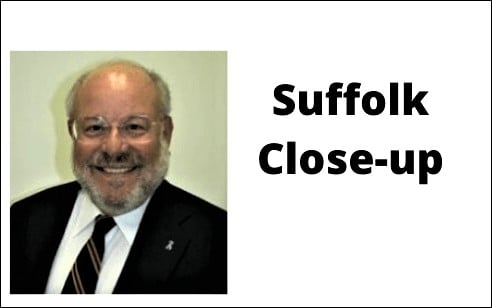“Suffolk County was the first in the state to bring litigation,” noted Rob Calarco, presiding officer of the Suffolk County Legislature, about the lawsuit the county brought in 2016 against multiple defendants it charged in connection with the plague of opioids that has caused many deaths in Suffolk and elsewhere.
Nassau County and the New York State attorney general joined in the lawsuit. Thereafter, other governments in New York State got involved in it.
And Suffolk’s legal initiative “precipitated other municipalities across the country to bring their own lawsuits in their own jurisdictions or in federal court,” said Mr. Calarco.
What national media described as a “landmark trial” began on the lawsuit on June 29 in Central Islip. It was “the first opioid case in the country where a jury rather than a judge will decide the outcome,” pointed out The New York Times. There were so many defendants that the auditorium of Touro College’s Jacob D. Fuchsberg Law Center became a Supreme Court trial court.
The lawsuit, as The Times put it, “targeted all links in the opioid supply chain.” Then, in recent weeks, “one by one, major companies named in suit have settled.”
Last week, New York Attorney General Letitia James announced a $1.1 billion settlement with defendants AmericsourceBergen, Cardinal Health and the McKesson Corp., three of the nation’s top opioid distributors. Suffolk County is to receive between $87 million and $106 million from this. This followed settlements with defendants including Johnson & Johnson from which Suffolk will receive up to $19.8 million and Purdue/Sackler family, $10.4 million to $19.6 million.
The funds will be used, said Mr. Calarco, for “educational programming, treatment, and other related efforts to remedy the impacts of this crisis” of opioid addiction. So tragically, “we can’t bring back the people lost.”
Meanwhile, the trial will continue for a few companies not settling.
It opened with the attorney for Suffolk County, Jayne Conroy, speaking about the natural beauty of Suffolk, but she said: “There is terrible darkness here. The evidence is going to show that more prescription opioids were shipped to Suffolk County than any other county in New York.”
The companies were charged with a “public nuisance.” More accurately: it has been a terrible crime. This was civil litigation not involving criminal charges. Asked last week at a press conference whether she was considering bringing criminal charges against any opioid makers or distributors, Attorney General James said the settlements are “silent on that.” Criminal charges could be brought. They should be. Giving up even huge amounts of their companies’ money isn’t comparable to executives and officers being jailed for causing the deaths of 500,000 people in the United States in the past two decades.
“Defendants caused this disaster together,” declared a state filing (available online). They were involved in a “scheme to expand the opioids market through a predatory campaign of lies, payoffs, and high-pressure sales tactics.”
They “collectively spent billions of dollars on this fraudulent marketing campaign over the last two decades,” it said. They were involved in numerous misrepresentations, it declares, itemizing many. They “spent hundreds of millions of dollars on unbranded advertising in order to create the appearance that unbiased and impartial medical information supported the widespread prescription of opioids.” They paid doctors—who are identified—to “lend their names to books and articles, and give speeches” and be “on committees that developed treatment guidelines that strongly encouraged the use of opioids.” They “used, funded, and directed numerous Front Groups.” And they “specifically targeted their marketing at two vulnerable population—the elderly and veterans,” it continues.
Meanwhile, also last week a $26 billion national opioid settlement was announced. The Suffolk-initiated lawsuit was a catalyst, said Mr. Calarco. “We started the ball rolling,” And “fearing the facts of the case coming out at the trial,” the companies settled.
Suffolk’s action on opioids parallels it being a governmental pioneer decades ago challenging the tobacco industry with first-in-the-nation legislation on smoking. Delegations from the Tobacco Institute came before the Suffolk Legislature and with straight faces denied any link between smoking and cancer. This industry-funded outfit was dissolved in 1998 as part of a national “Tobacco Master Settlement Agreement.” We know about governmental corruption. The tobacco and opioid industries—prime examples of corporate corruption.

